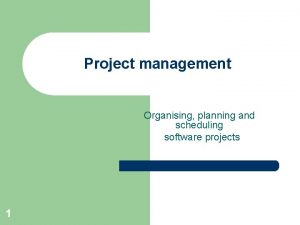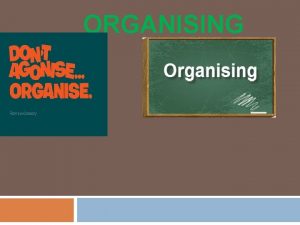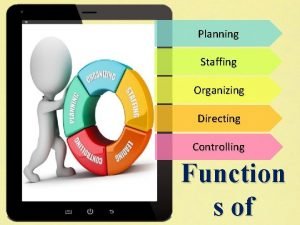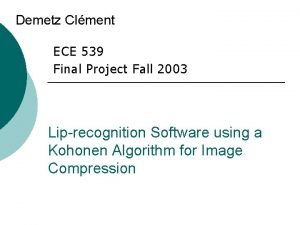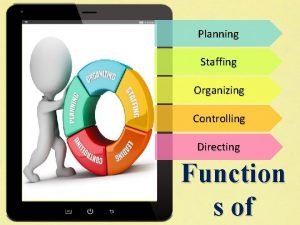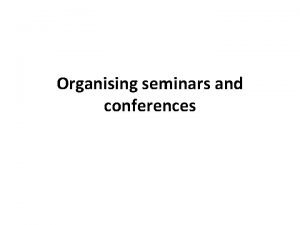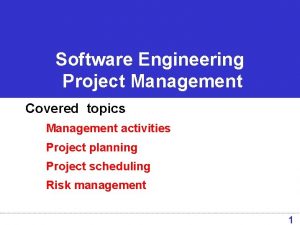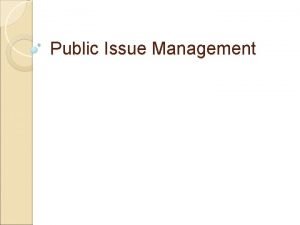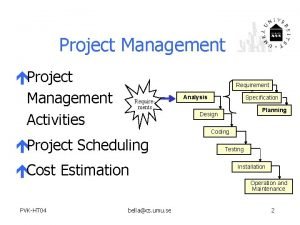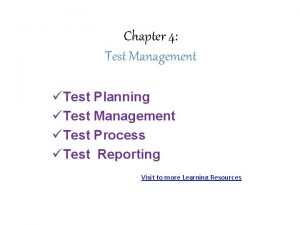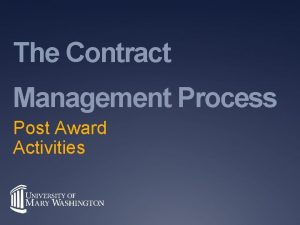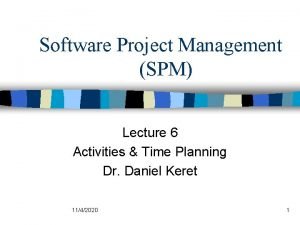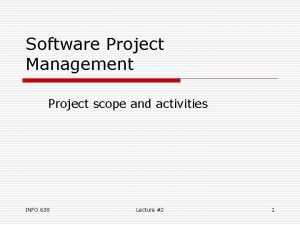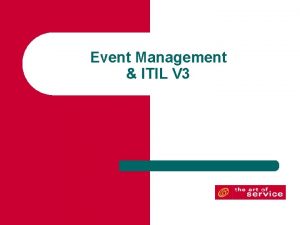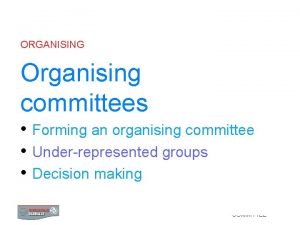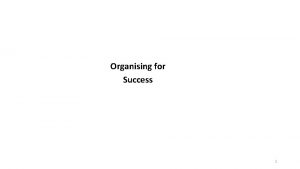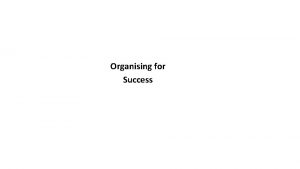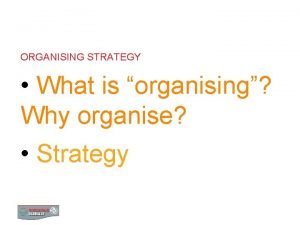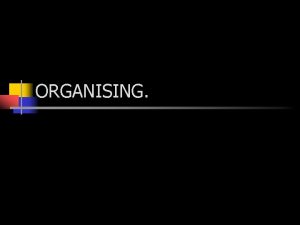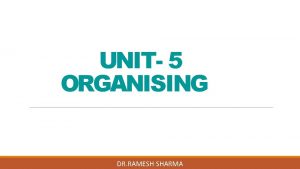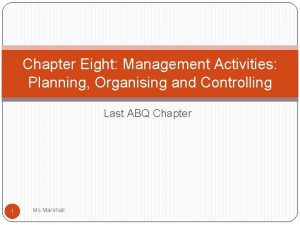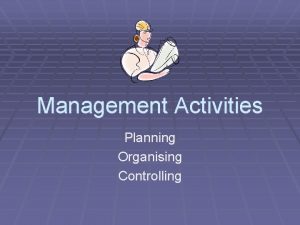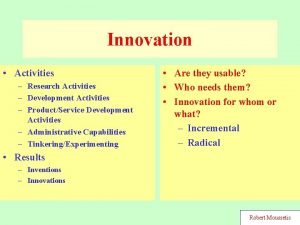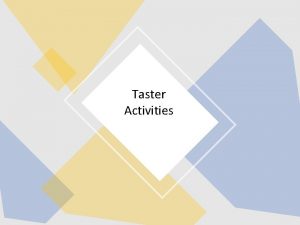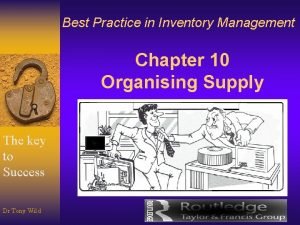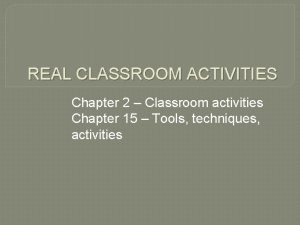CHAPTER 11 Management Activities 2 Organising ORGANISING Organising



























- Slides: 27

CHAPTER 11: Management Activities 2: Organising

ORGANISING • Organising occurs when the manager co-ordinates all business resources, e. g. employees, capital and raw materials, into the most effective formation to achieve organisational goals.

TYPES OF ORGANISATION STRUCTURE • There are different organisation structures used in business, including: 1 Functional 4 Matrix/teambased 2 Geographic 3 Product

1 Functional Organisation Structure

1 Functional Organisation Structure Advantages 1 Employee Motivation Employees see that there is a promotional path in the firm. This encourages them to gain experience and skills, which can be used when future promotion opportunities arise. 2 Expert Knowledge It allows employees to become experts in a department, e. g. marketing. This improves productivity as employees can complete their duties faster and more efficiently. 3 Responsibility Employees know who is responsible for what jobs in the firm and to whom their queries and concerns should be directed.

1 Functional Organisation Structure Disadvantages 1 Focus on Department Goals Employees may work towards departmental objectives rather than the overall business goals. This can slow down business growth. 2 Slow Communication can be slow between departments. This can mean the business is slow to react to change, e. g. increased competition in the market. 3 Lack of Teamwork There may be a lack of trust between employees working in cross-departmental teams. This reduces productivity in the firm.

2 Geographic Organisation Structure

2 Geographic Organisation Structure Advantages 1 Local Managers Local managers provide local consumers with products that satisfy their needs. This helps to increase consumer loyalty. 2 Friendly Competition There is often friendly competition between the geographic units. Each unit tries to outdo the others in terms of increasing sales and reducing costs. This helps to increase profits for the entire business. 3 Promotion Managers in geographic units make decisions on behalf of the business in their region. This helps them to prepare for future promotion opportunities.

2 Geographic Organisation Structure Disadvantages 1 Duplication of Work There may be duplicate departments working in different geographic areas, with employees doing the same job. This increases business costs. 2 Conflict between Management Decisions made by senior management for the entire business can have a negative effect on local areas, e. g. redundancies. This can result in conflict between managers. 3 Communication There may be poor communication between geographic units. The development of new products or processes may not be shared, which can result in organisational inefficiency.

3 Product Organisation Structure

3 Product Organisation Structure Advantages 1 Consumer Demand As it is focused on specific products, this structure can meet consumer needs more effectively. The producer can react faster to changes in consumer demand. 2 Monitor Product Performance The business can monitor the performance and profits of each product unit. It may decide to discontinue underperforming products or increase promotion of products that are performing well. 3 Expert Knowledge Employees working in product divisions can develop expert knowledge. This means they can give a higher level of customer service to consumers.

3 Product Organisation Structure Disadvantages 1 Duplication There may be a duplication of units with multiple people doing the same job, e. g. marketing. This increases business costs. 2 Product Competition There may be rivalry between units as some of their products may be in direct competition with each other, e. g. car models such as the Toyota Yaris and Toyota Aygo. 3 Poor Communication Poor communication between the product units may result in the business missing opportunities in markets.

4 Matrix (Team) Organisation Structure

4 Matrix (Team) Organisation Structure Advantages 1 Increased Motivation Employees feel valued when they are part of a project team. This motivates employees and increases productivity. 2 Improved Communication Working with employees on a cross-business project improves communication. It helps employees from various departments to work towards common organisational goals. 3 Improved Decision-making Project team members have a wide range of skills and experience. This can lead to better-quality decisions being made by the team.

4 Matrix (Team) Organisation Structure Disadvantages 1 Multiple Managers The employees may receive conflicting instructions from their department and project managers. They may struggle to decide which orders to prioritise. 2 Training Costs Employees working in teams need training in areas such as teamwork and communication to help the team work effectively. These training programmes increase business costs. 3 Lack of Trust It may take the team longer to become productive, due to the lack of trust between employees from different parts of the firm.

CHOOSING AN ORGANISATION STRUCTURE Consumer Demand Specialisation Intrapreneurship • A business may choose a product or geographic structure so that it can satisfy consumer needs more effectively. • If the business wants its employees to become experts in a particular business area it may choose a functional organisation structure. • The business may choose a matrix organisation structure to encourage intrapreneurship and develop new products and processes for the firm.

CHAIN OF COMMAND • Span of Control: This relates to the number of employees who report directly to a manager.

CHAIN OF COMMAND

CHAIN OF COMMAND Wide Span of Control • A manager has a wide span of control when they have a large number of employees reporting directly to them. • It is often used when employees do not require a high degree of supervision.

CHAIN OF COMMAND Narrow Span of Control • A narrow span of control applies when a smaller number of employees report directly to the manager. • It is used when employees require greater supervision.

LEVELS IN AN ORGANISATION STRUCTURE • While businesses operate in different industries and sectors, many of them have similar organisational levels in their firms.

LEVELS IN AN ORGANISATION STRUCTURE Shareholders Board of Directors • These are individuals or organisations that have purchased shares in the firm. • The board of directors are appointed by the shareholders of the business. Senior Management • The Chief Executive Officer (CEO) holds the most senior management position in the firm. Middle Management • Middle managers tend to be heads of specific departments, e. g. production manager. Supervisor • Supervisors assign tasks to front-line staff and monitor employee progress. Front-line Staff • These are the employees who carry out the dayto-day duties and tasks within a department.

DELAYERING • Delayering involves removing one or more management layers in an organisation structure.

DELAYERING Advantages 1 Improved Communication Faster communication throughout the organisation, as the messages pass through fewer levels. 2 Reduced Costs Delayering often involves removing managerial staff. This reduces wage costs for the business. Disadvantages 1 Decreased Motivation Employees may fear for their own job security. This can decrease motivation and reduce productivity among staff. 2 Managerial Span of Control Delayering can result in a wider span of control for managers. This increased workload may lead to stress and burnout.

ADVANTAGES OF ORGANISING AS A MANAGEMENT ACTIVITY Clear chain of command • It ensures that everybody in the business knows who reports to whom. Improved communication • Management can send instructions down the organisation structure to staff. Management workload • The workload can be distributed more evenly to prevent managerial stress and work overload. Employee motivation • It shows employees that there is a clear promotional path in the organisation.

Key Terms • • • organising formal organisation structure organisation chart informal organisation structure functional organisation structure specialisation • • • geographic organisation structure product organisation structure matrix organisation structure chain of command span of control delayering

CREDIT SLIDE • Shutterstock • i. Stockphoto. com
 Project scheduling process
Project scheduling process Concept of organising
Concept of organising Lambini and sons
Lambini and sons Planning organizing leading and controlling
Planning organizing leading and controlling Self organising map
Self organising map Planning, organizing, directing and controlling are the
Planning, organizing, directing and controlling are the Organizing seminars and conferences
Organizing seminars and conferences Planning and organising skills in the workplace
Planning and organising skills in the workplace Operating activities vs investing activities
Operating activities vs investing activities How do you find these activities
How do you find these activities Support activities and primary activities
Support activities and primary activities Primary activities and secondary activities
Primary activities and secondary activities Management activities in software engineering
Management activities in software engineering What does public issue management means
What does public issue management means Project management activities
Project management activities Why is performance management important?
Why is performance management important? Outstanding defect ratio formula
Outstanding defect ratio formula Post award activities in contract management
Post award activities in contract management Activities covered by spm
Activities covered by spm Activities covered by software project management
Activities covered by software project management Factors affecting global human resource management
Factors affecting global human resource management Software
Software Exceptional event in itil
Exceptional event in itil Storage infrastructure management activities
Storage infrastructure management activities Top management and middle management
Top management and middle management Top management middle management first line management
Top management middle management first line management Top management and middle management
Top management and middle management Chapter 11 cash control and banking activities
Chapter 11 cash control and banking activities
